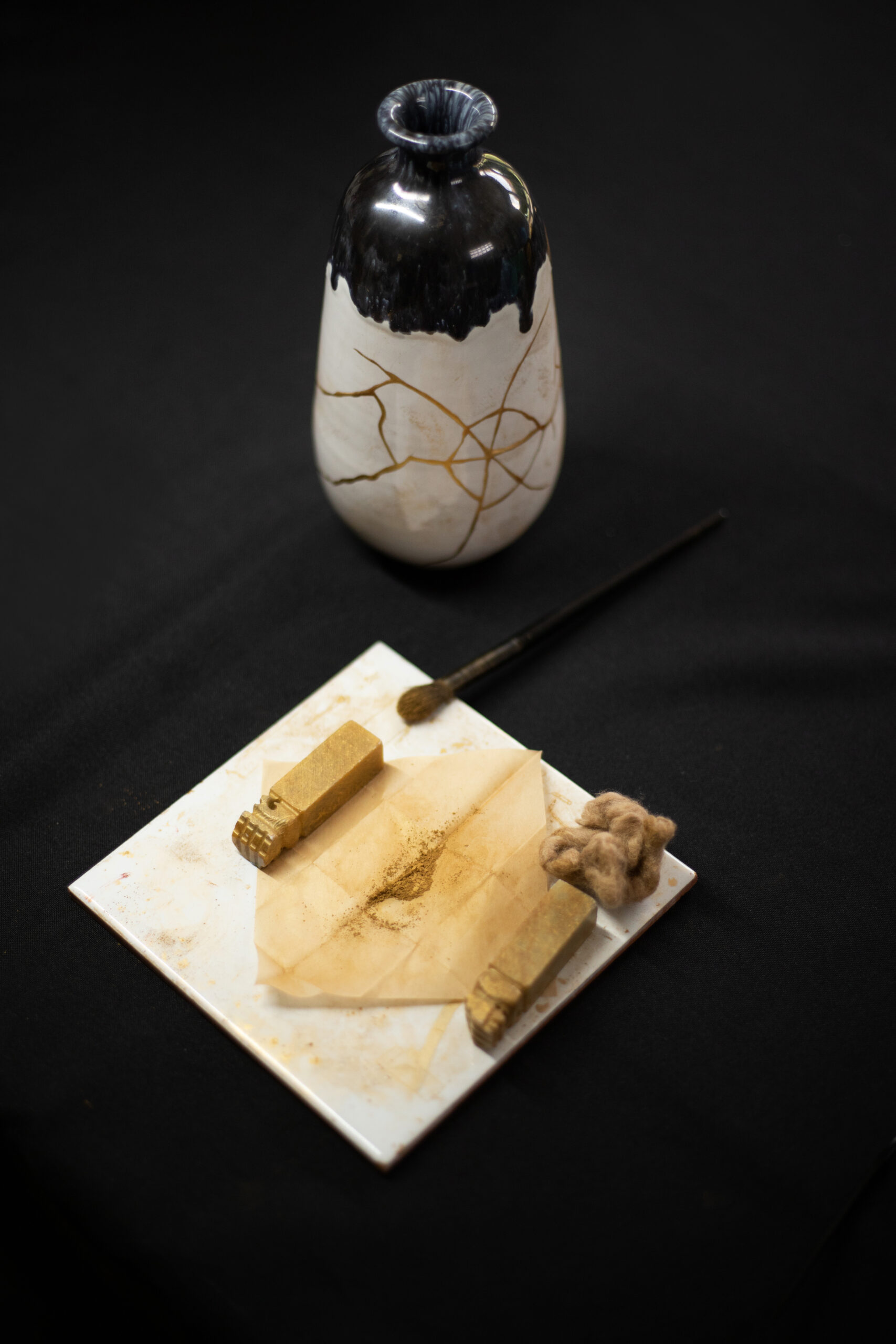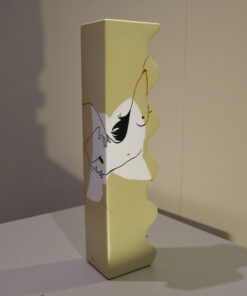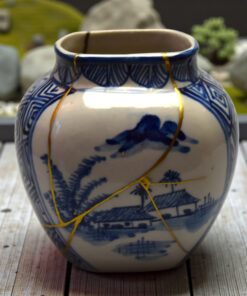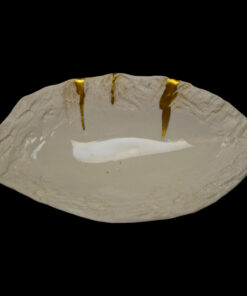Kintsugi, the Japanese art of repairing broken ceramics with gold or metallic lacquer, is much more than a simple repair technique. It’s a philosophy that celebrates imperfection and the history of an object. But why is this ancient practice so costly and time-consumin ?

The Cost of Kintsugi: A Question of Materials and Mastery
Precious materials :
- Urushi lacquer: The key ingredient in kintsugi is urushi lacquer, a natural resin extracted from a specific tree. Urushi lacquer is extremely expensive, as its production is slow and delicate. It requires years of experience to handle correctly.
- Precious metals: Gold, silver and platinum are often used for repairs. These metals are inherently expensive.
Expert craftsmanship:
- Patience and precision: Each piece is unique and requires meticulous attention. The repair process is long and delicate, requiring great patience and a steady hand.
- Technical mastery: Kintsugi craftsmen must master the techniques of lacquer preparation, application and polishing. This mastery takes years of apprenticeship.
Craft rarity :
- Rare craftsmanship: Kintsugi is a traditional art that has been passed down from generation to generation. The number of craftsmen mastering this technique is limited, which helps to increase its value.
Time, an Essential Ingredient in Kintsugi
- Drying lacquer: urushi lacquer dries extremely slowly, each layer requiring several days to harden. This drying time is essential for a long-lasting, resistant finish.
- Multiple coats: To achieve a solid, aesthetically pleasing repair, several coats of lacquer are applied. Each coat must be carefully prepared and polished.
- Meticulous polishing: Final polishing is a crucial step in revealing the beauty of the repair. It requires a great deal of skill and time.
- Gradual learning: Mastering kintsugi doesn’t happen overnight. It takes years of practice to acquire the precise gestures and artistic sensitivity needed to create exceptional pieces.
In conclusion, the high cost and time required to create a piece of kintsugi is a reflection of ancestral know-how, the use of precious materials and a philosophy that celebrates imperfection and the beauty of the passing of time. Each kintsugi piece is a unique work of art, steeped in history and sentimental value.
-
 “Hot Voltige” Vase: Rebirth in Gold and Ink
“Hot Voltige” Vase: Rebirth in Gold and Ink -
 White vase with kintsugi and yobitsugi1 750 € VAT excl.
White vase with kintsugi and yobitsugi1 750 € VAT excl. -
 White and blue vase with chinese landscape1 150 € VAT excl.
White and blue vase with chinese landscape1 150 € VAT excl. -
 Porcelain canapé plate250 € VAT excl.
Porcelain canapé plate250 € VAT excl.




